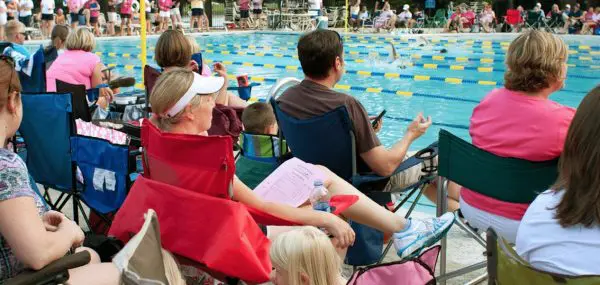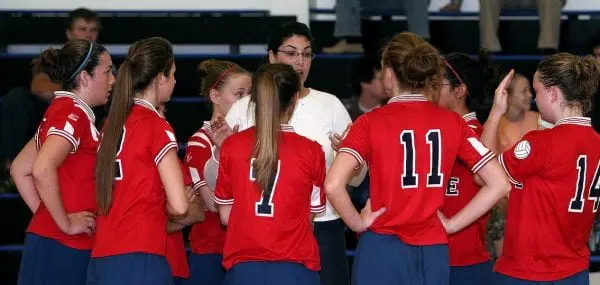Participating in organized youth sports offers many potential benefits for adolescents, including physical activity, building self-esteem, leadership and organizational skills.
Yet, as a parent I’ve often found the whole scene to be quite stressful at times. The shuffling and herding of young players from practices and games. The year-round schedule of some sports. And the nagging feeling that everyone is just over scheduled. As a pediatrician, I’ve often seen young athletes with recurrent concussions and families that find it difficult to keep up with the demands of sports schedules. Unfortunately, by the time many young athletes hit adolescence, they’ve left organized sports behind.
According to John O’Sullivan, author of Changing the Game, more than 70 percent of young athletes drop out of organized sports before reaching high school, largely because it’s no longer fun.
Kids are being pushed to “be on travel teams by age 7, have a private coach by 8, and be committed to a single sport by 10.” The myth that sports will provide scholarships or entry into elite universities has helped create this culture.
I had the opportunity to speak with O’Sullivan about navigating the world of sports for teenagers.
Q: What’s the best way for parents to introduce their kids to sports?
O’Sullivan: Early on, it’s important to introduce our kids to the ABCs—agility, balance, and coordination. That doesn’t mean signing them up for soccer at one and a half years of age. Instead, spend time with them at the playground and teach them how to run and jump. There’s a myth that kids are either born athletes or they’re not. But agility, balance, and coordination are learned. Some kids pick them up quickly and others take more time. As kids move on to team sports, keep them in a good environment with little competitive pressure for as long as possible.
Q: So how do parents decide when their kids should specialize in a particular sport?
O’Sullivan: Before sport specialization, determine the values and goal of each program. Travel soccer at 9 or 10 isn’t a bad thing, but try to maintain some balance. So, maybe play travel soccer in the fall and then rec basketball in the winter. Be careful to avoid becoming a “multi-sport specialist” where they are playing multiple travel sports at the same time. In a way we’ve lost that middle ground where a multi-sport athlete can find a good level of play. Everyone gets funneled into “the rec league that doesn’t care” or the ultra competitive teams. We end up losing a lot of athletes.
Q: What if the push for early specialization comes from your child? Should you allow early specialization or try to “hold them back”?
O’Sullivan: When your child is driving it, then follow their lead. But parents need to find a balanced approach that provides adequate rest and time for other interests.
Q: Parents worry that their child must specialize early on in order to play in high school. Are they right?
O’Sullivan: The size of the high school will matter. There’s a big difference in terms of the level of competition for sports. Having said that, it doesn’t change the science of how to best develop an athlete. Here’s what we know:
- science says DO NOT specialize early unless you are a female gymnast or figure skater because you are very likely to get injured and suffer overuse injuries.
- science says that early sport specialization will more likely lead to burnout and maladaptive behaviors.
- science says that playing multiple sports at young ages develops better all-around athleticism.
So, have your child play lots of sports. Then find the one that’s the best fit. And start to focus during middle school and high school, putting a lot into that sport. That said, the best athletes will likely be the ones who make it at the high school level. So if your kid is not a great athlete, it’s unlikely they will make the varsity baseball team. You cannot get around that.
Q: So how do we capture those less-athletic kids back into the world of sports?
O’Sullivan: My personal thinking has been changing on this and it’s been influenced a lot by a book called Spark by Harvard psychologist, John Ratey. He talks about the influence of exercise on brain development and learning. For the vast majority of kids, their physical fitness pursuits will be an individual pursuit. They will be a cyclist, a runner, or a swimmer. And by the end of high school, they are pretty much done with team sports. So if your child is funneled off a team by 13 or 14, have them run cross-country, do track, or swim. These are the individual sports they will likely pursue when they are older, so why not give them a good basis to start from?
Q: That’s a great point. Should our school’s physical education programs take a lead? How can schools encourage kids to stay active even if they are no longer on a team?
O’Sullivan: I would encourage everyone to look at the PBS special on the Naperville School District in Illinois. They changed their whole focus away from team sports to individual sports. They got heart rate monitors, treadmills, and climbing walls. The obesity rate in the Naperville School District is 3 percent. Academic performance has actually gone up. It’s unbelievable what they have done.
Another problem is with the grading system for gym. Of course all of the elite athletes are going to get the best grades. One of the things that came from Naperville was looking at heart rate monitors to grade based on individual effort. Consider the 14-year-old girl who isn’t a fast runner. She might get a C grade. But if her heart rate is 90 beats per minute (BPM), then she’s really giving all her effort. And you can give her a grade based on her effort. It’s pretty powerful. You change the message you give that 14-year-old girl from “you’re the slowest runner in the class” to “you are really working hard.” And you change her perception of herself as an athlete.
Q: In your book you talk about how parents are “chasing the scholarship myth” and often have unrealistic expectations. Are parents buying into this myth?
O’Sullivan: I’ve seen surveys where 30 to 50 percent of parents think that their kid is going to get a scholarship. In reality, the numbers are 1 to 2 percent or even less. In fact, most schools, such as Division 3 and Ivy League schools, don’t even offer athletic scholarships.
Q: We hear from readers a lot about how to handle all the “drama” on sports teams. Everyone wants their kid to be the star. How do you recommend parents handle situations like these?
O’Sullivan: My best advice is to begin with the end in mind. What do you want sports to mean in your kid’s life? If you want sports to be something that teaches your child to work hard, to be confident, to have integrity, to work well with others, to be a leader—as long as you keep your eye on the prize I think things like the politics and the drama—you just work past them.
Becoming an athlete is not a sprint; it’s a marathon. So every experience is a teachable moment. If you’re on a team with a lot of drama, you need to decide whether to continue with this group. If the answer is no, then find a group with less drama. Or, better yet, be an agent of change within your group. Work to change the environment on the team because the drama may serve the parents but it doesn’t serve the kids.
Q: How are you working to spread your messages about youth sports?
O’Sullivan: I founded this organization called the Changing The Game Project in 2012 to get the message out, and the book was just a part of it. I travel and speak at schools, clubs, and conferences to get the message out about how we can create a player first environment in youth sports. Because when we do and we serve the needs, values, and priorities of our kids, that’s when our kids not only stick with it and enjoy it but that is actually the path to raising elite athletes. I have a blog at Changingthegameproject.com that is growing everyday. So it’s a message that is really growing and resonating with parents and coaches.
Q: What’s your final take home message for parents?
O’Sullivan: Always ask yourself this: If I were the one playing, what would I like in this situation? How would I like to be coached? What should cheering look like? How would I like to be supported? If you’re ever in doubt of the answer, ask your son or ask your daughter what they want from you and help them find situations to allow them to get what they want from sports.




